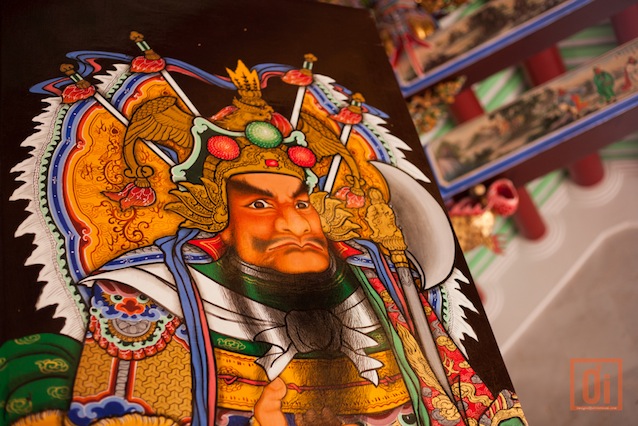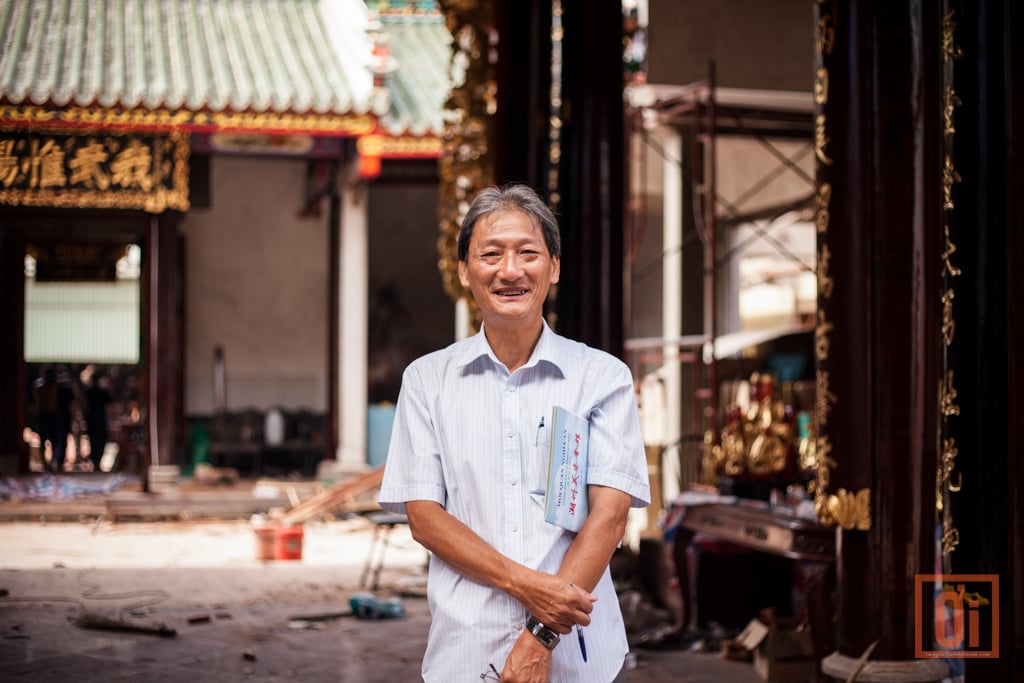The restored Chaozhou temple will become one of the most authentic Chinese heritage pieces in the Cho Lon area, preserving the cultural legacy of the local Chaozhou community for years to come…
FEW OF CHO LON’S historic structures are as ancient or as beautiful as the Chaozhou Association Hall and Temple, hidden from the busy stream of traffic along Nguyen Trai by a pale gray spirit wall, and rarely visited by tourists or local urban explorers. Currently undergoing its fifth and most wide-ranging renovation in over two centuries, the complex is the cultural heart of the Chaozhou community, one of the five principal Chinese ethnicities that make up Ho Chi Minh City’s District 5. To the members of the Chaozhou Association, the restoration work is more than cosmetic – it’s a chance to preserve the essence of their heritage for future generations. With the Chaozhou culture now largely eclipsed in the region by that of the Cantonese, it is perhaps the last such opportunity they will have.
Vuong Quoc Quang, who manages the association office, isn’t at all disturbed by the relative prominence of the Cantonese culture in Cho Lon. “Cantonese is one of the most important Chinese dialects in the world, and we take it as a common language here. They’re the most populous group in the district, so it’s only natural that their dialect has become the most well-established over the course of time. If you’re Chinese and you’re born here, you really need to understand Cantonese to get along.”
According to official estimates, there are 300,000 ethnic Chinese people living in Cho Lon, a third of which are Cantonese. Chaozhou people number at around 60,000, most of them second, third, or even fourth generation descendants of the original Chaozhou immigrants who settled in the area.
“We don’t think of ourselves as Chinese in the same way that mainlanders do,” says Vuong. “As overseas Chinese, we’re Vietnamese first. We’re just one of the 54 Vietnamese ethnic groups in the country. We’re still Chinese descendants, but the real Chinese people of my father’s time have all passed away now. I’m second generation – born and raised here, like most of us in Cho Lon.”
The younger generation of today, however, has markedly less of a Chinese identity than previous generations had. “It’s different for the fourth generation,” says Vuong. “They’re not as familiar with their mother language as their parents are. After liberation, a lot of Chinese people left the country for places like Guangxi, Australia, New Zealand, the States – everywhere. A large number of the people left behind were those who’d married Vietnamese spouses.”
“Before the war, Cho Lon was almost totally populated by ethnic Chinese. After the exodus, Vietnamese families started to move into the empty houses, and pretty soon everyone was speaking Vietnamese. After a while, the younger generation – like my own son – couldn’t really understand much Chinese at all. If you speak to them in Chinese, they’ll answer in Vietnamese.”
Preservation for education
The point of the association is to preserve the original culture and dialect of the Chaozhou people, as well as to protect any artifacts passed down from earlier times. The association is a resource for a community that many believe will inevitably converge with other ethnic groups in the area. There are five such associations in Cho Lon, each originally established to assist their respective members with any difficulties they might face; to preserve their dialects; and to provide a meeting area for their gatherings. Beyond this, each association had a free hospital funded by its members out of their own business profits, as well as a cemetery, a number of schools, and a sports events committee.
“This was all before liberation. All the associations had those functions. Nowadays, fourth generation Chaozhou people rarely speak their dialect, so it’s important to keep the association going to preserve the language, especially now that we don’t have the schools anymore,” he adds.
Chaozhou people, according to Vuong, are extremely warm-hearted. “We’re prone to gathering together, and those who’ve been successful in business are usually very charitable. We provide a great deal of scholarships for Chaozhou youths to make sure they can afford to take their studies to university level. At the same time, we’re ruthless in business – we hate to lose – so we’ve become very capable when it comes to making money.”
“We also place a great deal of importance on remembering where we come from. We focus a lot on protecting our community, partly because we don’t want to forget or dishonor previous generations. We place a high value on education. Of course, it’s still important for us to learn Cantonese, and Vietnamese is essential – after all, we’re Vietnamese people now. We have a Chinese background, sure, but as an ethnic group, we’ve already made the transition into Vietnamese society.”
The reconstruction work going on now is a fairly complete overhaul of the association and temple structures. “We’re not exactly certain when it was first built,” says Vuong, “but we think it’s older than 200 years, probably closer to 230. The temple connects us with the early immigrants, who were Buddhists. For those of our ancestors who came here to find work, it served as somewhere they could sleep, and as a place to celebrate our forefathers back in China, which is very important in our culture. It was originally a thatch building, but as each member of the community became successful, they’d contribute to its improvement.”
The current restoration is being overseen by professional traditional architecture experts flown in from Chaozhou itself to ensure that the work done is as close to the original design as possible. There is strong attention to detail evident in the construction work; with the intricate sculpting necessary in recreating the traditional Chaozhou style – which recalls the architecture of some of the earliest Chinese dynasties – only highly-trained specialists can provide the level of authenticity that the association hopes to achieve.
“The last time it was restored was in 1963. That was wartime, so it was impossible to travel back to Chaozhou to compare with examples of the original architectural style. This time we’re able to fill in the gaps in the record with genuine details. There’s a lot of gold in the coloring, for example – we’re using pure gold foil in the traditional Chaozhou style rather than gold paint.”
He adds: “We want to protect the original artistic elements in the structure and make sure they last another century without needing any further restoration work done. We want to make sure our descendants will have their heritage close at hand while those of us who can remember it are still here. As long as we have the ability, we need to make sure this is done.”
Chaozhou Association Temple
Hien Trang Chua Ong
678 Nguyen Trai, D5






